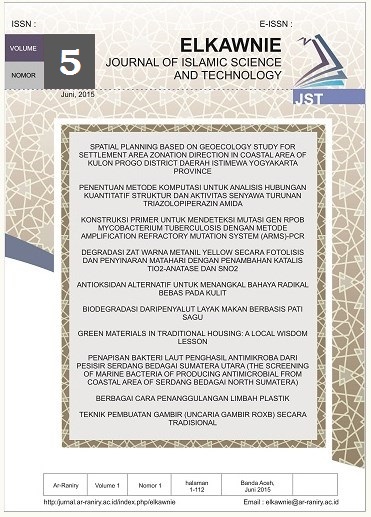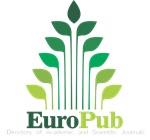Pengaruh Medium Dan Filter Arang Aktif Dari Sampah Organik Pada Sistem Akuaponik Terhadap Pertumbuhan Dan Keberlangsungan Hidup Ikan Nila (Oreochromis niloticus)
DOI:
https://doi.org/10.22373/ekw.v5i2.4793Keywords:
Arang aktif, akuaponik, ikan nilaAbstract
Ikan nila sebagai salah satu komoditas ikan yang potensial dibudidayakan di perairan air tawar. Namun, produktivitas ikan nila di Aceh masih kurang yang disebabkan karena karena keterbasan tambak air tawar. Oleh karena itu dilakukan upaya pembudiayaan ikan nila secara aquaponik dengan menggunakan medium dan filter dari arang aktif. Penelitian ini bertujuan untuk mengetahui pengaruh medim dan filter dari arang aktif pada sistem akuaponik terhadap pertumbuhan dan keberlangsungan hidup ikan nila. Rancangan yang digunakan RAL yang terdiri dari 5 ulangan dan 5 perlakuan. Analisis data menggunakan ANOVA yang dilanjutkan dengan DMRT. Hasil penelitian menunjukkan bahwa terdapat pengaruh penggunaan medium dan filter dari sistem aquaponik terhadap pertumbuhan dan keberlangsungan hidup ikan dengan ketebalan arang aktif 6 cm (P4). Semakin tebal arang aktif yang digunakan sebagai medium dan filter pada sistem aquaponik maka rerata pertumbuhan dan keberlangsungan hidup meningkat.
References
Baral, D. R., Jha, K. 2015. Preparation of activated charcoal adsorbent from waste tire. Scientific World. Volume, (Number 10, 2015)
Danish, M., Trivedi, R.N., Kanyall, P., Khati, A., and Agrawa, R. Importance of biotechnology in fish farming system. Society for Scientific Development in Agriculture and Technology. (Volume 12, Number 1, 2017)7-14
Dhahiyat, Yayat, T., Rizal, Y., Ahmad., Zahidah. Aquaponics: a sustainable fishery productions system that provides research projects for undergraduate fisheries students. International Journal of Agriculture and Environmental Research. (Volume 4, Number 2, 2018)
Farhat, R,. Nasrun, M., Muhammad, M. Adaptation, Growth and Survival of Tilapia (Oreochromis niloticus) in Bafgh Brackish Water. Iranian Journal of Fisheries Sciences. (Volume 21, Number 2, 2016) 22-30
Frederick, M and Fishel. Activited charcoal for pesticide inactivation. Ifas Extention. (Volume 1, Number 4, 2017):45-51
Francics. A., Thenmozhi.R., Sivakumar. M., Sivakumar. K., Sasikumar, G. Waste Water Treatment Unit Using Activated Charcoal. International Research Journal of Engineering and Technology. Volume 5, Number 3, 2018)
Gomez, K and A. Gomez. Prosedur Statistik untuk Penelitian Pertanian.Edisi Kedua. (Diterjemahkan oleh Endang Sjamsuddin dan Yustika S. Baharsjah). (Jakarta: Universitas Indonesia, 2010) 98-100
Meisrilestari., H. Pembuatan arang aktif dari cangkang kelapa sawit dengan aktivasi secara fisika, kimia dan fisika-kimia. Konversi. Volume 2, Number 1, 2013).
Somerville, C., M. Cohen, E. Pantanella, A. Stankus, and A. Lovatelli. Small- scale Aquaponics Fovod Production :Integrated Fish and Plant Farmin. FAO. Journal. World Aquac. Soc. (Volume 2, Number 46, 2015) 2028 -2032.
Yavuzan, H.Y., Robaina, L., Pirhonen, J., Mente, E., and Domínguez., D. Fish Welfare in Aquaponic Systems: Its Relation to Water Quality with an Emphasis on Feed and Faeces. Water. (Volume 9, Number 13)5-12
Zonneveld, N., Huisman E. A, dan Boon, J. H. 2016. Prinsip-Prinsip Budidaya Ikan. (Jakarta: Gramedia Pustaka Utama, 2016) 318.
Downloads
Published
Issue
Section
License
Proposed Policy for Journals That Offer Open Access Authors who publish with the Elkawnie journal agree to the following terms:
a. Authors retain copyright and grant the journal right of first publication with the work simultaneously licensed under a Creative Commons Attribution License that allows others to share the work with an acknowledgement of the work's authorship and initial publication in this journal.
b. Authors are able to enter into separate, additional contractual arrangements for the non-exclusive distribution of the journal's published version of the work (e.g., post it to an institutional repository or publish it in a book), with an acknowledgement of its initial publication in this journal.
c. Authors are permitted and encouraged to post their work online (e.g., in institutional repositories or on their website) prior to and during the submission process, as it can lead to productive exchanges, as well as earlier and greater citation of published work (see The Effect of Open Access).

























